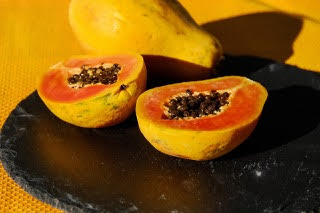Although high fidelity and realism in medical simulations are important, they have led to an increase in cost that is a barrier to entry, especially in less resourced settings. This article explores examples of low-cost simulators in gynecology and obstetrics that demonstrate effective learning even without the use of advanced technology.
In simulation, there is increasing talk of high fidelity, realism and immersiveness. However, this is causing the ultimate goal of simulation in medicine to be lost sight of: facilitating learning for students and health care professionals. In fact, the prices of selling and maintaining simulators have become increasingly higher, making it impossible for facilities with fewer resources to keep up with a constantly developing technology. This could cause a disparity between universities and simulation centers, which would be reflected in the skills of health care workers.
This article reports on some low-cost simulators used in gynecology and obstetrics, which prove to be valuable tools despite their low fidelity and lack of electronic components. We chose to analyze the case of gynecology and obstetrics for two reasons: first, because this discipline is particularly affected by budget differences between countries, centers, and hospital facilities. In addition, proper training of all health personnel involved during childbirth would lead to a reduction in maternal and neonatal mortality, which is a key goal of the 2030 Agenda for Sustainable Development signed by UN member countries.
Starting with solutions proposed by the Norwegian company Laerdal, there are several affordable options, including Mama Birthie and Mama Natalie. These are wearable systems for training natural childbirth and complications during labor, such as shoulder dystocia or breech delivery, made from readily available materials such as plastic, rubber and fabric, which cost less than 2,000 euros per piece. Mama Birthie allows the annexation of an additional module for cesarean delivery, while Mama Natalie also provides components for the management of postpartum complications, such as uterine atony.
Another even cheaper alternative are the Parto Pants, developed by the nonprofit Pronto International and sold for $500. These are a pair of surgeon’s pants manually modified through cuts to which structures, mostly made of cotton and elastic materials, are sewn to simulate all the anatomical areas involved. This also makes it possible to insert a placenta attached to a doll representing the newborn. To simulate birth, the pants are worn by an actor who pushes the doll, placed under the clothes, through the birth canal. Since the actor has full control over the position and speed at which the doll comes out, complications due to misplacement of the newborn can be recreated. In addition, to increase realism, a bag containing fake blood can be used to simulate emergency situations.
In addition to commercial systems, there are many “homemade” inventions that, using readily available items, allow specific techniques to be learned. One example is the Papaya Workshop, an initiative of the University of California’s Bixby Center for Global Reproductive Health, which involves using a papaya to teach intrauterine procedures. In fact, the papaya provides a good representation of the internal anatomy of the uterus because of its shape, size and granularity. The workshop allows teaching how to properly perform bimanual examination procedures, insertion of intrauterine devices, and manual uterine suctioning for the management of voluntary or spontaneous termination of pregnancy. This training was integrated into the University of San Francisco curriculum in 2003 and has continued to be used ever since, including variations such as the Pitaya Workshop, by the TEACH organization, where dragon fruit is used in order to simulate bleeding following pregnancy loss. The construction and use of low-cost simulators for the management of obstetric emergencies were covered during the last SIMMED congress held in Genoa by Dr. Claudio Crescini and Massimo Cordone, who showed how simple models can be extremely effective during training courses.
It is reported in several articles that these low-cost designs prove to be valuable tools for both learning maneuvers and training communication skills, as well as increasing the level of safety in performing procedures. This points out that very advanced tools for medical training are not always necessary, and it is therefore possible to train efficient health personnel even in countries with few resources.
Sources:
papayaworkshop.org
www.innovating-education.org/2018/10/teach-simulation-training/
Paul, M. and Nobel, K., 2005. Papaya: a simulation model for training in uterine aspiration. Fam Med
Walker, D., et al. 2014. PRONTO low-tech obstetric simulation and team training in Mexico improves patient outcomes, and evidence-based care at birth. Obstetrics & Gynecology
DeStephano, C.C., et al. 2015. A randomized controlled trial of birth simulation for medical students. American journal of obstetrics and gynecology
Paul, M. and Nobel, K., 2005. Papaya: a simulation model for training in uterine aspiration. Fam Med
READ ALSO

















































1 comment on “Less can be more: low-cost simulators in gynecology and obstetrics”
I really applaud low-cost, attainable initiatives, and I am pleased we do seem to be coming out of the ‘fidelity’ race. Or indeed, better defining high-fidelity simulation as simulation that is accurate for the situation – for example a tomato makes a very nice eyeball for practising injections, or so I am told. So I very much enjoyed reading how fruits are applied to learning. Another example. Here in Bristol, the fidelity of a simulator (leather and latex) for suturing cows designed by a veterinarian colleague was improved by orienting the platform vertically rather than horizontally. A much more accurate representation of the real-life scenario, and yet so simple. And MUCH harder for the students., but better prepared for practice. Well done to the authors.